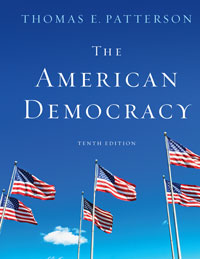1 A) Roman Catholics and mainline Protestants B) mainline Protestants and Jews C) fundamentalist Protestants and Jews D) Roman Catholics and Jews E) fundamentalist Protestants and Roman Catholics 2 A) the tendency of polled individuals to respond against their true beliefs because of fear of being judged negatively. B) the section of a polling sample that must be disregarded because of "non-opinions." C) the tendency of much of the young adult population to change partisan loyalties in response to major social or economic events. D) the tendency of independents to vote for members of both major parties. E) the condition in a pluralistic society in which each group includes individuals who also belong to other groups. 3 A) opinion error B) sampling error C) population error D) age cohort error E) probability error 4 A) 1936 B) 1940 C) 1948 D) 1972 E) 1984 5 A) Polled individuals will feel a time pressure that will affect their responses. B) People polled in person tend to give less honest answers than when polled over the phone. C) Logistical difficulties will prevent the collection of a large-enough sample size. D) It will include a disproportionate number of business employees on their lunch break. E) It will include a disproportionate number of women and older adults. 6 A) Populists B) Libertarians C) Conservatives D) Liberals E) None of these answers is correct. 7 A) Massachusetts B) California C) Maine D) Michigan E) Louisiana 8 A) Republicans were more likely to oppose an increase of troops in Afghanistan. B) Republicans are more likely to oppose reductions on taxes than are Democrats. C) Democrats are more likely to oppose government redistribution of national income than are Republicans. D) Democrats are more likely to support pro-business initiatives than are Republicans. E) Republicans are more likely to oppose social welfare programs than are Democrats. 9 A) 5 B) 10 C) 15 D) 25 E) 38 10 A) the redistribution of national income by the government B) open support for the national military C) the flying of the American flag on private buildings and homes D) the strict separation of church and state E) the measuring of public opinion by national organizations 11 A) liberal B) populist C) libertarian D) conservative E) None of these answers is correct. 12 A) Economic class has more influence on public opinion in the United States than in Europe. B) Economic class has little to no effect on public opinion in Europe or in the United States. C) Racial progress has increased the regional divide in the United States. D) Region has intensified as a basis of political opinions in the United States. E) Economic class has less influence on public opinion in the United States than in Europe, and region has declined as a basis of political opinion in the U.S. 13 A) election returns. B) newspaper editorials. C) interest group activities. D) voter registration drives. E) polls. 14 A) street polling. B) the ability of public opinion polls to predict national election results. C) telephone polling. D) Internet polling. E) exit polling. 15 A) tend to favor more government intervention in economic issues, but not social issues. B) tend to favor more government intervention in social issues, but not in economic issues. C) tend not to lean toward any major party. D) tend to vote for different parties in successive elections. E) have a partisan tendency. 16 A) family B) interest groups C) school D) media E) All of these are agents of socialization. 17 A) telephone polls B) public demonstrations C) letters to the editor D) election results E) All these answers are correct. 18 A) it would indicate that the sample size was taken incorrectly. B) it would be mathematically incorrect to claim that one of them is "leading." C) it would indicate that the sample was not collected randomly. D) the candidate ahead by 1 percentage point could be labeled as "leading." E) it would indicate that the poll's margin of error was 5 percent. 19 A) telephone books B) computers C) satellites D) cellular phones E) None of these answers is correct. 20 A) A survey revealed that only 46 percent of college seniors could identify the phrase "We hold these truths to be self-evident, that all men are created equal" as being part of the Declaration of Independence. B) A survey of Ivy League students revealed that half could not name both U.S. senators from their state. C) A survey of Ivy League students revealed that 75 percent could not identify Abraham Lincoln as the author of the phrase "a government of the people, by the people, and for the people." D) All of these are true: Surveys have found that only 46 percent of college seniors could identify the "We hold these truths…" phrase as part of the Declaration of Independence; half of Ivy League students could not name both U.S. senators from their state; and 75 percent of Ivy League students could not identify Lincoln as the author of "a government of the people, by the people, and for the people." E) None of these answers is correct.





